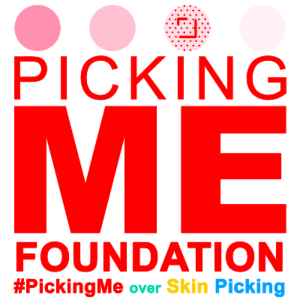
Dermatillomania is dangerous.
Just ask Picking Me Foundation Founder and CEO Lauren McKeaney.
“In 2014, I was hospitalized from picking an area into an abscess for the sixth time except on this visit I contracted the life-taking bacterium MRSA (methicillin-resistant staphylococcus aureus) and almost lost my right leg,” McKeaney said. “After having eight inches of my inner thigh removed, a vacuum placed inside that I wore like a purse 24/7, and put on a walker and into months of physical therapy, I could no longer silently suffer.”
Skin picking can create open wounds, cuts, and sores all over the body making dermatillomania sufferers more susceptible to infection than the average person. The path to infection usually looks something like this.
"I'm 20 years old and basically I'm constantly picking my skin around my fingers to the point where they bleed and I still continue to pick at them,” dermatillomania sufferer Kirsty said. “I bite the skin and I suffer with anxiety and I've tried everything to get myself to stop. My fingers have got infected because I constantly pick at them."
Symptoms of infection include redness, inflammation, swelling, pain, the presence of pus, and warmness around the wound.
Infection can occur swiftly when even small wounds are left improperly treated or untreated, and an infected wound can lead to more severe health conditions down the road such as staph infections, contraction of MRSA and other dangerous bacteria or fungi, rashes, painful blisters, sepsis, general sickness, etc.
If all that doesn’t sound particularly appealing to you, take a peek at these tips to protect yourself against infections.
- Clean with water. Cover fresh wounds with bandages, Band-Aids, or gauze dressings. Try to apply bandages or other covering material right away when the wound is still fresh. Change the bandages if they become wet or dirty and keep the wound clean.
- Thoroughly wash your hands often with soap and water so that if you casually touch or pick at your wound, you won’t spread bacteria or fungi to it.
- Honey. This gooey product of bees’ hard work kills bacteria and fungi and contains nutrients and chemicals that promote quicker healing. Hit up Winnie the Pooh for all your honey needs, although if you aren’t tight with him grocery-store quality honey will do the trick as well.
- Tea tree oil prevents infections and encourages wound healing by boosting the activity of white blood cells and reducing inflammation. Okay cool, so where the heck can you get it? It’s not as rare as you think: Target, CVS, Walgreens and other major pharmacies all sell it.
- Remember to always use a gauze pad, towel, Q-tip, etc. when applying treatments to the skin to avoid hand-to-skin contact.
- If infection symptoms don’t subside with the above treatments, seek out a medical professional.
